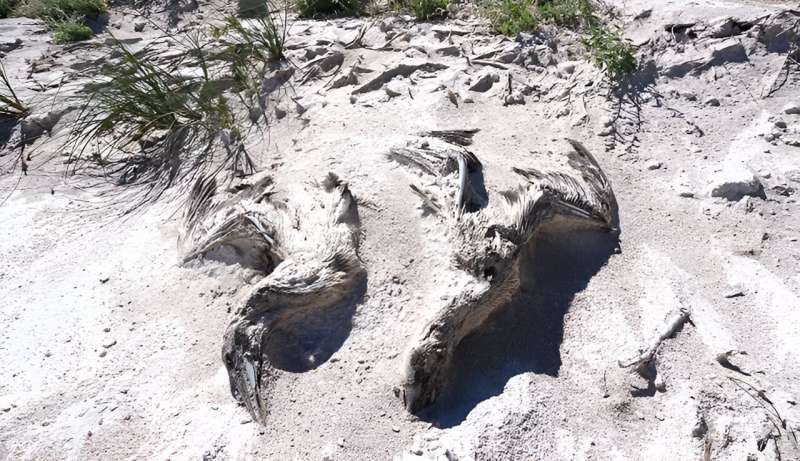This article has been reviewed according to Science X's editorial process and policies. Editors have highlighted the following attributes while ensuring the content's credibility:
fact-checked
trusted source
proofread
Largest cyclone to hit Australia killed off 90% of Bedout Island's masked boobies

A vast colony of breeding seabirds on Bedout Island, Australia, experienced "unprecedented" mortality when Cyclone Ilsa battered the island in 2023.
The cyclone is thought to have killed off between 80 and 90% of the brown and masked boobies that breed on the island, potentially threatening the population's future survival. The Bedout masked booby is a seabird that is likely only found on the small island on which it breeds.
Located about 40 kilometers off the north-western coast of Australia, Bedout Island is a pretty inhospitable, low-lying island only just rising above the waves. With no vegetation to cast a shadow, temperatures during the day can soar, while its low profile makes it susceptible to extreme weather events.
But despite this, every year it is inhabited by tens of thousands of seabirds, including brown boobies, lesser frigatebirds, crested terns and masked boobies. This makes the island an internationally important seabird breeding colony.
But in 2023 the island was in the path of Cyclone Ilsa. The category five storm was one of the largest ever to hit Australia, with winds of at least 218 kilometers per hour recorded as it battered Bedout Island before making landfall on Western Australia.
"The cyclone hit in April, which is a reasonably peak time when lots of seabirds were nesting," says Dr. Alex Bond, the Principal Curator of Birds at the Natural History Museum. In the wake of the storm, Alex and his colleagues asked the Bureau of Meteorology to conduct an arial survey of the island four days after the cyclone hit.
At a time when there should have been up to 25,000 birds on the island, aerial images revealed just 85.
Unprecedented mortality
In the face of such extreme weather, it was plausible that the birds might simply have flown off and dispersed out to sea and other islands. So a few months later the team of researchers managed to visit the island to see what remained. What they found was utter devastation.
"The dead animals were still there," explains Alex. "We were able to do counts of the bodies and we estimated that basically all the brown boobies and practically all the masked boobies had been killed by Cyclone Ilsa."
"The mortality that we've seen is unprecedented."
They think that this one storm killed up to 90% of all the nesting seabirds, leaving perhaps as few as 40 of the Bedout masked boobies remaining. While the birds are not a separate species, they are genetically distinct and still form a critical population of the masked booby.
"Depending on how you slice your cake, taxonomically speaking the Bedout masked booby may be endemic at subspecies level," explains Alex. "We know genetically they are isolated compared with other masked booby populations, but whether they tip things over the line in terms of is it a subspecies is still a question that we're looking at."
"But suffice it to say, Bedout Island is probably one of the most important breeding sites for these seabirds both nationally and internationally."
Seabirds are typically very long-lived but slow breeding, usually producing just one or two eggs per pair per year. But by and large the fact that a cyclone hit the colony is not the aspect of this that worries Alex.
"The important thing to remember is that these birds have evolved in areas with cyclones," explains Alex. "That's not the issue here."
"The problem is two-fold. Number one was just the intensity of the storm. This was the strongest cyclone to hit Australia, and we're going to see more of that as one of the consequences of the global climate breakdown. The other issue is the recovery time."
Effectively, as these storms become more intense and more frequent—as is predicted to occur under a scenario in which the planet continues to warm—the birds will not have the time to recover their numbers before the next major cyclone hits.
While the impacts of increasing plastics on seabirds have gained more attention over the past decade, the impact of the climate crisis on these species through extreme weather events such as cyclones is less well studied.
Unfortunately, the incident on Bedout Island is unlikely to be the last of these.
Provided by Natural History Museum
This story is republished courtesy of Natural History Museum. Read the original story here




















